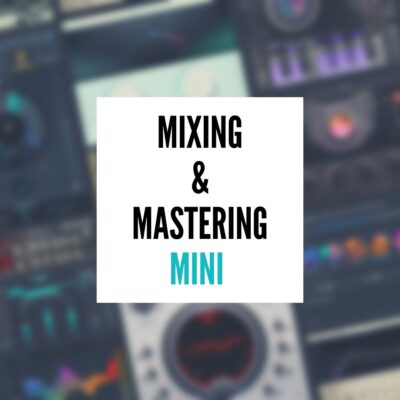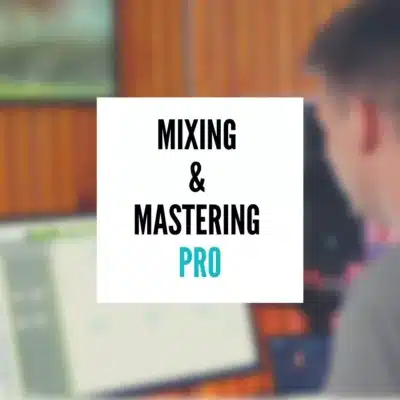I recently got a great question: “When should I use a fast compressor attack time?” It’s one of those things that might seem simple, but knowing when to dial in a fast attack can make a huge difference in your mixes. So I figured, why not break it all down for you? Today, we’re diving into four key scenarios where using a fast attack time can really take your mix to the next level. Make sure to watch the video if you want to hear the examples.
What is Attack Time?
Alright, before we dive into the specific scenarios, let’s quickly break down what attack time actually is. Simply put, attack time is how fast your compressor reacts to the incoming audio once the signal crosses the threshold. In other words, it’s the amount of time it takes for the compressor to start doing its job—reducing the gain.
A fast attack time means the compressor kicks in almost immediately, clamping down on the transients right away. On the other hand, a slow attack lets more of the initial transient pass through before the compression kicks in. Both can be useful in different situations, but today we’re focusing on when you want to use that fast attack to really shape your sound and take control of those transients.
Scenario 1: Drums
Let’s start with the most obvious example—drums. Drums are packed with transients, especially elements like the snare and kick, and a fast attack time can help you clamp down on those peaks to get a more controlled sound.
For this example, I’m using Neutron’s compressor. It’s awesome because you can actually see how the compression is working on your signal. First, I start with a medium attack and a 4:1 ratio, doing some light compression on a drum loop. It sounds good—taking about 4 dB off—but it’s still letting those transients through, which is usually what you want. However, if you’re looking for that aggressive, upfront sound, this is where fast attack comes in.
I dial the attack time down, and you can immediately hear how it changes the whole feel of the drums. Everything gets way more punchy and aggressive. This is especially useful in parallel compression, where you blend the super-compressed signal with the original to keep the dynamics but add some extra punch.
Fast attack on drums is great when you need that snare or kick to cut through the mix, especially in genres like rock or EDM. Just be careful not to go too fast—if you’re under 5 milliseconds, you might start distorting the signal. But when used right, it brings those drums front and center, giving them that in-your-face energy.

Drum Compression Settings
Scenario 2: Bass
Next up is bass. Bass lines can be tricky because a player’s dynamics can sometimes be all over the place—some notes hit too hard, others are too soft. A fast attack can really help here by leveling things out and making the bass sit more consistently in the mix.
In this example, I’ve got a bassline where certain notes pop out more than others. Without any compression, you’ll notice the second and last notes are louder than the rest. If I throw on some compression with a medium attack time, it helps, but it’s not quite enough to tame those peaks.
This is where fast attack shines. I dial the attack down to around 6 milliseconds, and suddenly everything feels much more even. You might notice a bit of distortion if you push it too far, but when used properly, a fast attack can smooth out those inconsistencies without killing the vibe of the performance.
So, if you’ve got a bass part that’s jumping all over the place, fast attack can be a great way to tighten things up and make sure the low end holds steady in your mix.
Scenario 3: Vocals
Now, let’s talk about vocals—one of the most important elements in any mix. You might have been using a fast attack time on vocals without even realizing it. A great example is the 1176 compressor, known for having a super-fast attack, even at its slowest setting.
In this example, I’ve got a vocal track by my buddy Garrett Gregory. Without compression, the transients are all over the place. But when I turn on the 1176, even at a medium attack time, it already starts pulling those transients together and bringing the vocal more upfront.
Now, let’s dial the attack time all the way down for that super-fast compression. You’ll hear how it tightens the vocal even more, taming those sharp transients. While you might not always want to go this extreme, it’s a popular technique in vocal mixing—especially if you want your vocals to sit right on top of the mix.
Another trick is to use fast attack in parallel compression. You blend the compressed vocal with the original, so you keep the natural dynamics while still getting that upfront, polished sound. Fast attack on vocals is also a key component of de-essing, where you control harsh “S” sounds with quick compression on the upper frequencies.

Fast attack for Parallel Compression on Vocals
Scenario 4: De-essing
Let’s wrap things up with another area where fast attack comes into play—de-essing. You might not think of it this way, but a de-esser is really just a compressor with a fast attack and fast release, targeting specific high frequencies to tame harsh “S” sounds in vocals.
In this example, I’m using Ozone 11’s Dynamics module as a de-esser. It’s set up to compress only the higher frequencies where sibilance usually lives. With a fast attack and release, it clamps down on those sharp “S” sounds almost instantly. Without it, you’ll hear how those “S” sounds stick out and get distracting. Once I turn it on, though, it smooths everything out, and the vocal sounds way more natural.
Fast attack is crucial for de-essing because you need the compressor to catch those quick transients in the upper frequencies without affecting the rest of the vocal too much. It’s a subtle but important tool that keeps your vocals from sounding harsh or sibilant.
Conclusion
So there you have it—fast attack times can be a powerful tool in your mixing arsenal when used the right way. Whether you’re clamping down on drum transients, evening out a bass performance, tightening up vocals, or taming harsh “S” sounds with de-essing, fast attack compression gives you the control to shape your mix just the way you want.
But like any tool, it’s all about balance. Too fast and you might start distorting the signal or killing the natural dynamics. Used correctly, though, fast attack times help you control transients, tighten rhythms, and manage dynamic performances across your entire mix.
I hope you found this helpful! Drop a comment—how do you like to use fast attack times in your mixes? I’d love to hear from you. Also feel free to reach out if you need any of my mixing and mastering services.





